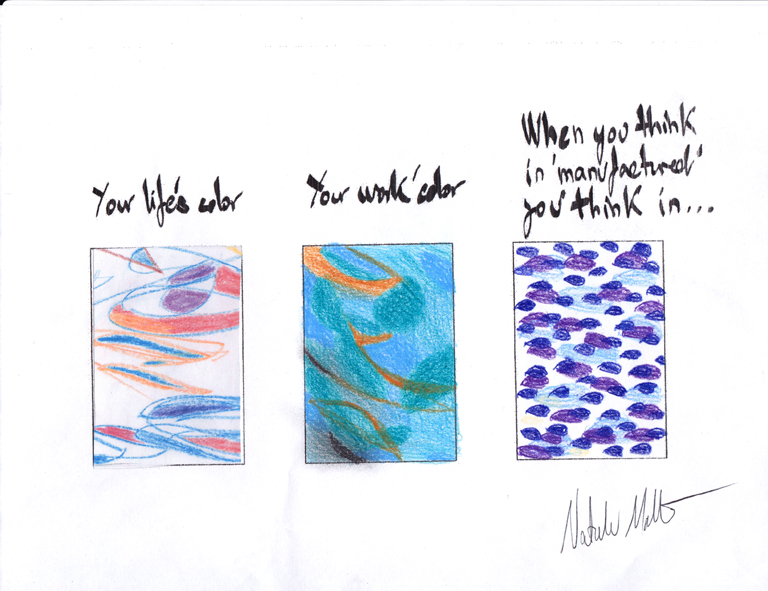mdby……NATALIE MACELLAIO
Today we show you Natalie Macellaio‘s work, with resins and different types of metals, creating volumes in the wall very attractive, to seeing what seems to you …
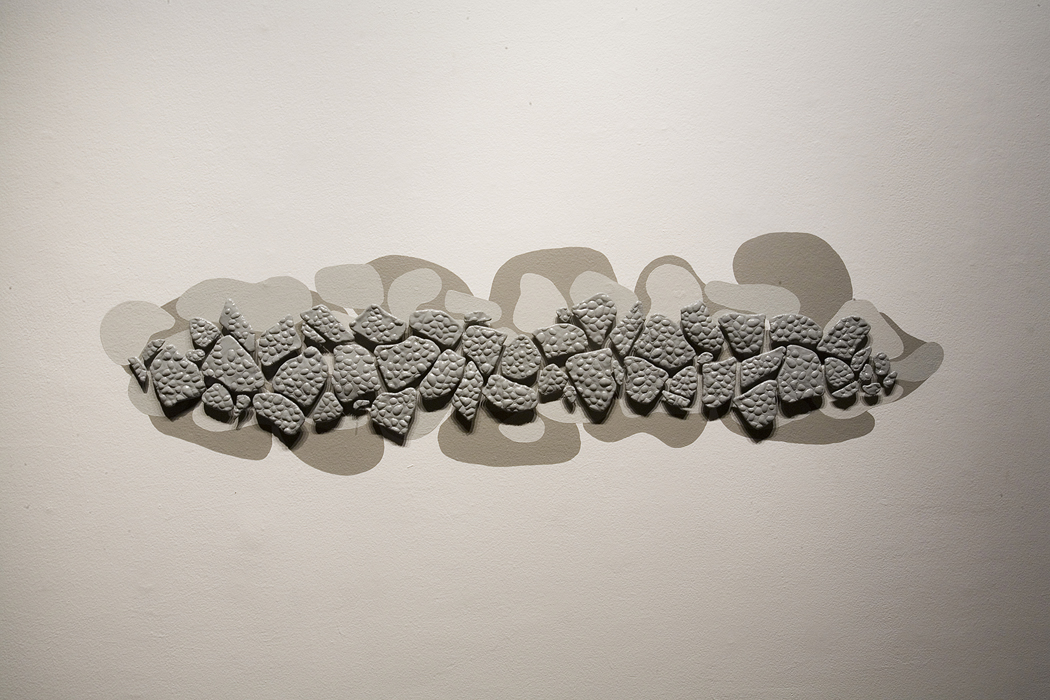
Natalie, how do you define your work?
My work marries a functional, aesthetic, and conceptual approach to metal. I work with concepts of adornment to create pieces that use the body to engage in conversations that draw directly from my personal life.
I was trained as a jeweler years ago, which brought me to understand the intricacies of creating work that is personal to each person wearing it and expresses parts of their life. These small works evolved into large scale installations and explorations of space, and detailed works on metal to contrast with difficult ideas of infestation, resilience, and the perception of ‘flaws’. Throughout this series of works, underlying it was a focus on the aesthetics of materials as they related to each other. Resins, concrete, and plaster were paired with fine silver, brass and copper to create a relationship between materials that served to express my personal narrative.
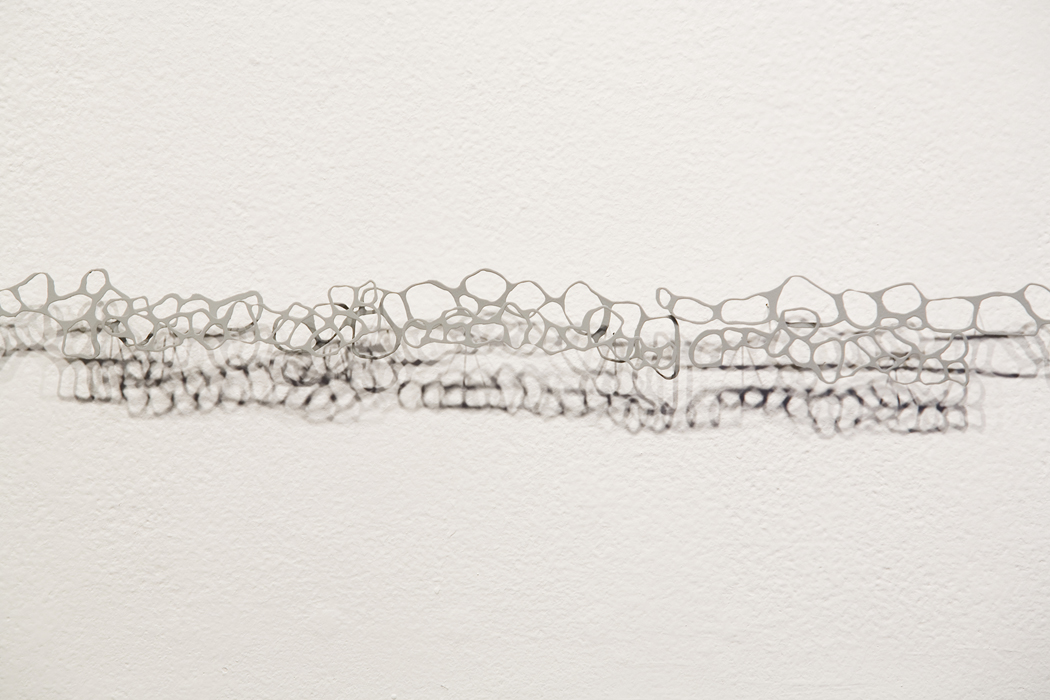
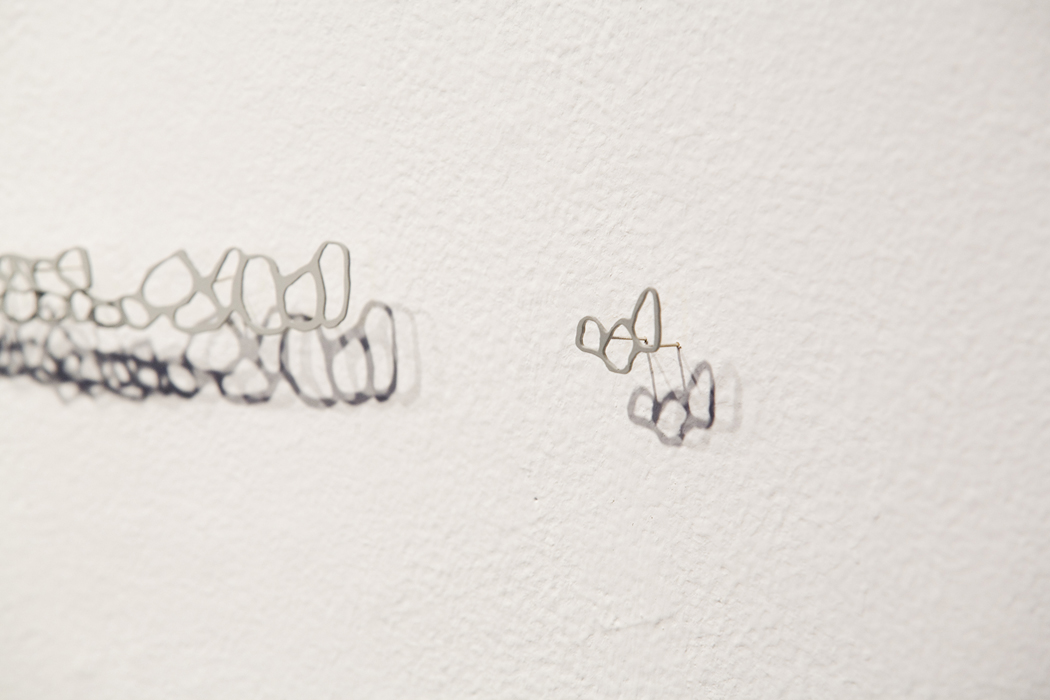
How do you begin?
I begin by observation. I am always looking at how a building is constructed or how cracks form in a sidewalk or how ants build their colonies. I am fascinated with the world around me in a physical sense, which is why I work in a variety of materials. The physical prosperities of materials and the way they can be manipulated are how many of my decisions are made in terms of form, color, and size.
The choice to work with precious metals has been because of their inherent strengths and weaknesses. I value silver, both for its culturally relevant quality and for its beauty. I employ copper for its strength and abundance. I am interested in creating something beautiful and desirable. As I continue to explore these personal narratives through these metals, themes that relate to my life as a mother begin to come through. My initial interest in small, intimate works, is finding a new source of expression that allows me to create intimate pieces that explore the relationships I have to my children.
When you were a kid, what was your dream job?
I wanted to be an architect when I was younger. I played with Legos and built tall structures and then knocked each one of them down to see which form was the strongest. I was always building objects. When I was nine I entered a Valentine’s Day Card Contest and I won first prize for my 3D heart/card.
In your “shifting” series you use precious metals, but in another series like “red dot”, you use resin. Are you more comfortable now with precious metals?
It is not a matter of being comfortable with precious metals but rather knowing what materials the piece calls for. While I was undergraduate student I worked for a commercial jeweler doing bench repairs. I learned a great deal about working with gold and other precious gems. Precious metal has a way of making an object feel overly important. I like to play with the perceived value society puts on precious metals and use those metals at certain time to better express my ideas.
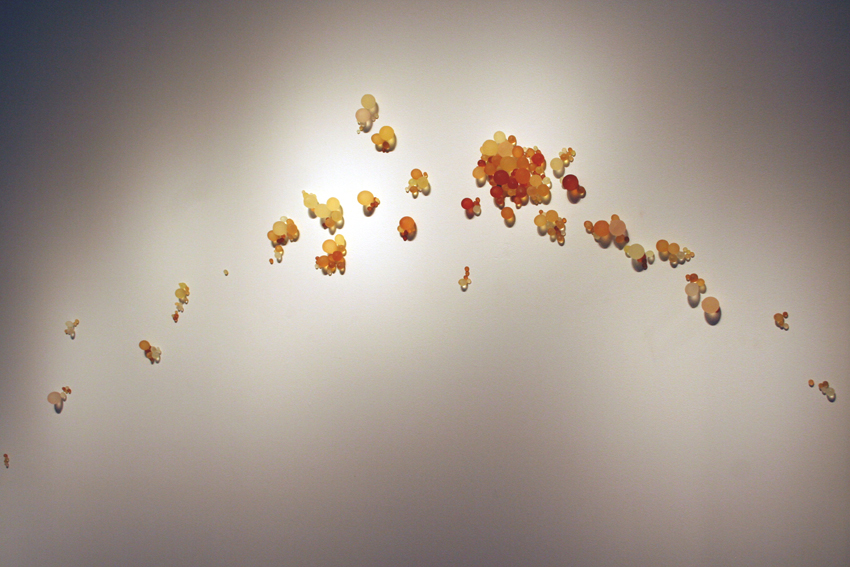
Your “traveling” work reminds me of Marian Bijlenga’s work in some way, which was your inspiration?
“travelling” happened as a result of cutting up a stencil for another piece. I was using the forms to press copper into the negative spaces and then realized that the stencil was more interesting. I was also looking at Cornelia Parker’s work at the time and love the repetition she creates with some of her installation pieces.
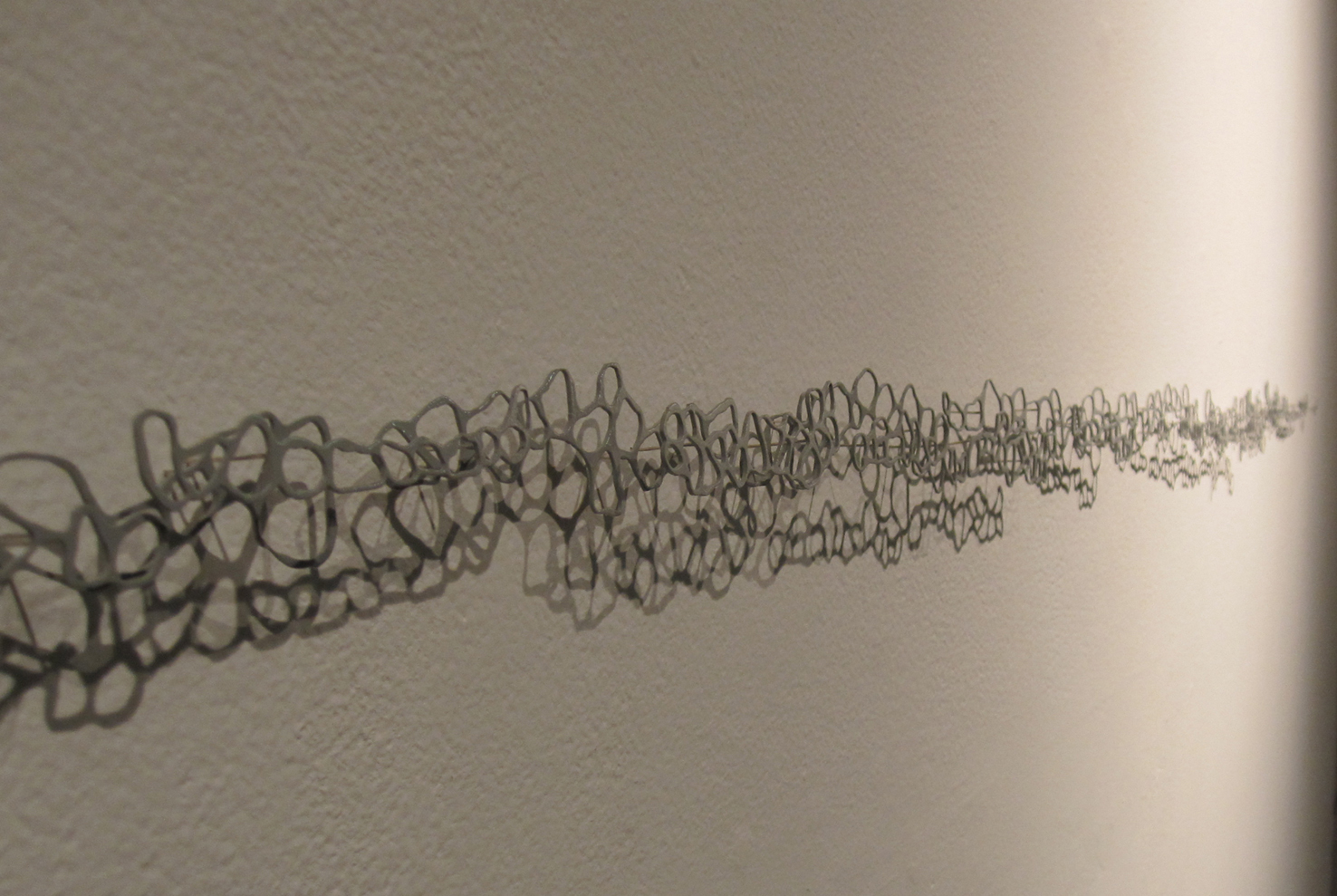
Which is the idea you want to give through your “red dot” work?
At the time I created “red dot” I had just finished graduate school and was working out of my home studio when I created “red dot”. I began working with resin while in school and was seduced by the transparent qualities of the material and the options for changing the color of the material. The piece took shape while I was installing the piece. I have always been interested in the repetition of a single form to create a larger structure. We see this a lot in the world of biology, and I am specifically interested in emergence.
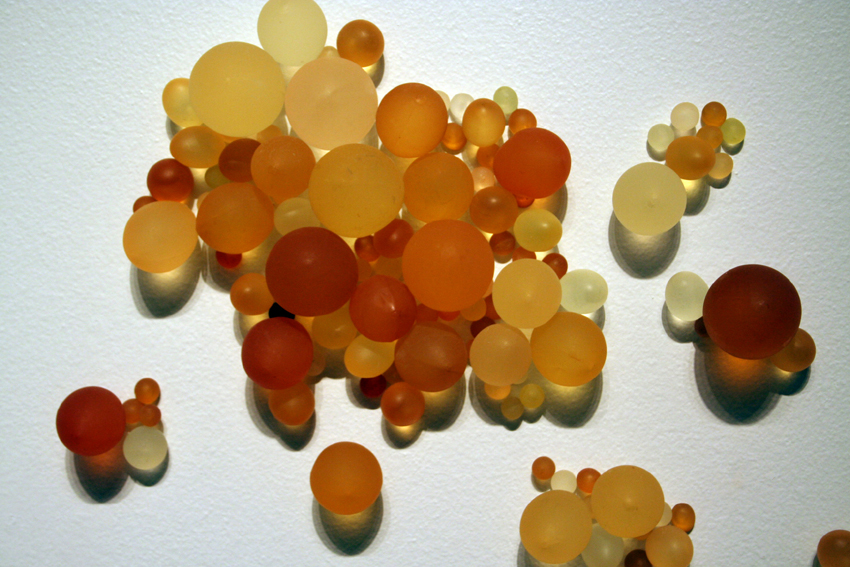
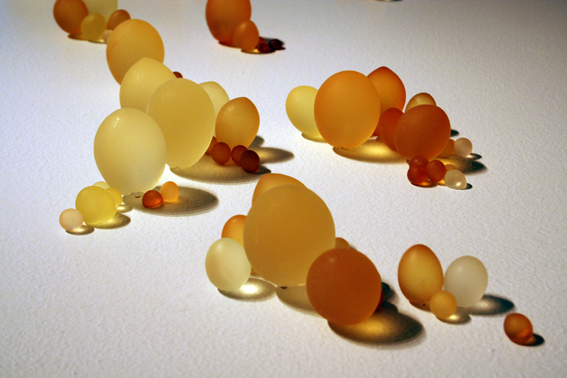
Who in the industry do you admire?
Ana Lopez – not only for her work but her ability to balance work, life and studio.
Louise Bourgeois – for her longevity and honesty in her work.
Billie Jean Theide – her work continues to change and grow with her, even with having great success with her earlier bodies of work.
Cornelia Parker – her installations are breath-taking along with the way she manipulates her materials giving them a new life.
You work by your own, do you feel good working alone all day long?
I am a Professor of Sculpture at Brookhaven Community College in Dallas, TX, so I get a lot of interaction with students and colleagues. When I am in my studio, I am by myself, which is a rare thing in my life, and so I really enjoy that time to create without having to answer questions or talk out my process. I am also working on a collaborative community project with Lesli Robertson called “The Mother Load”. This collaboration has worked well because I get to work closely with another colleague and we are able to keep each other motivated and compliment each others working styles.
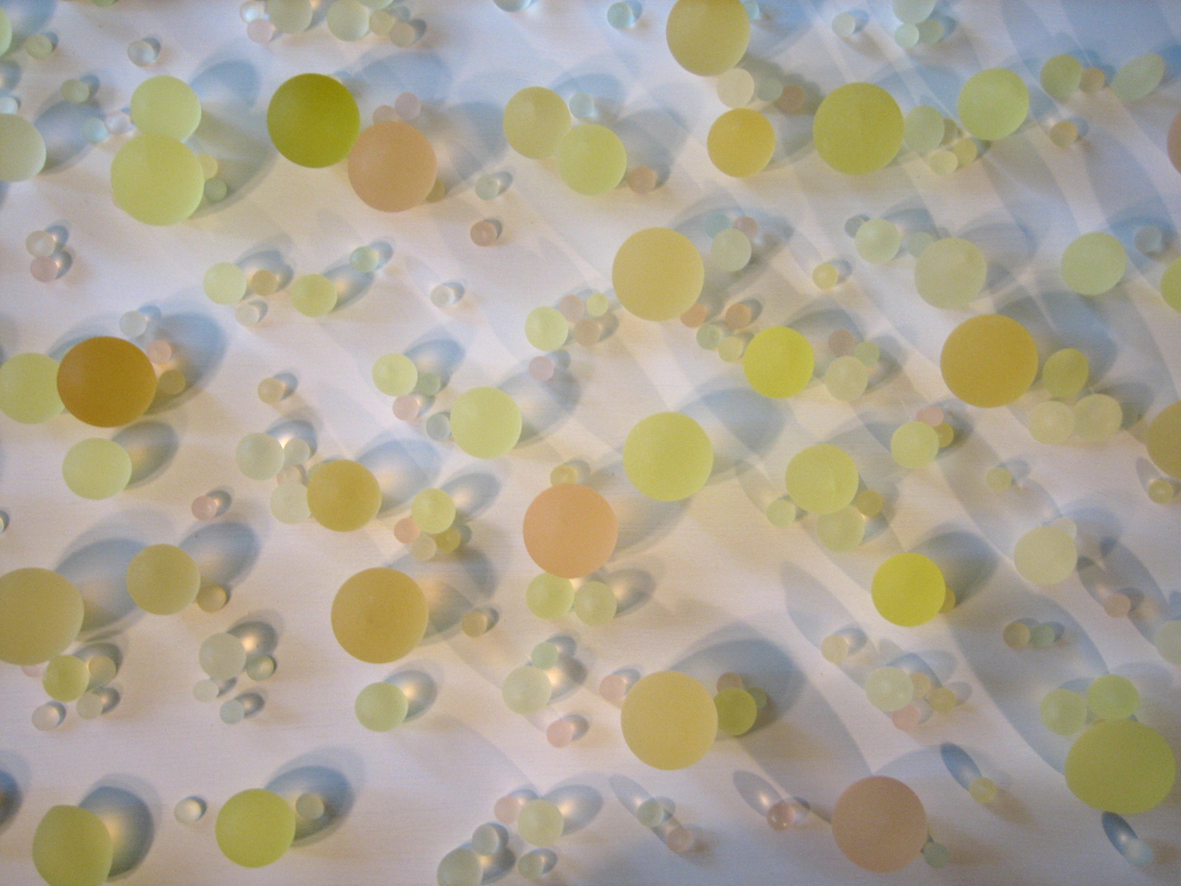
What about the money? Do you always succeed in making it work?
As I mentioned earlier, I am a Professor at a community college and so I am able to create work without relying on selling my work. This can be a double-edged sword because it takes time away from my studio work but the pressure to create work for other people is not there.
It is a work of passion to develop your own brand. Are there other brands that inspire you?
I have always wanted to be a maker of things. I find energy and fulfillment in creating beautiful, complex and thought provoking pieces. I have not thought of my work in the terms of making my own brand. Although I enjoy the challenge of designing and creating production work I am not currently working towards creating a brand as a goal.
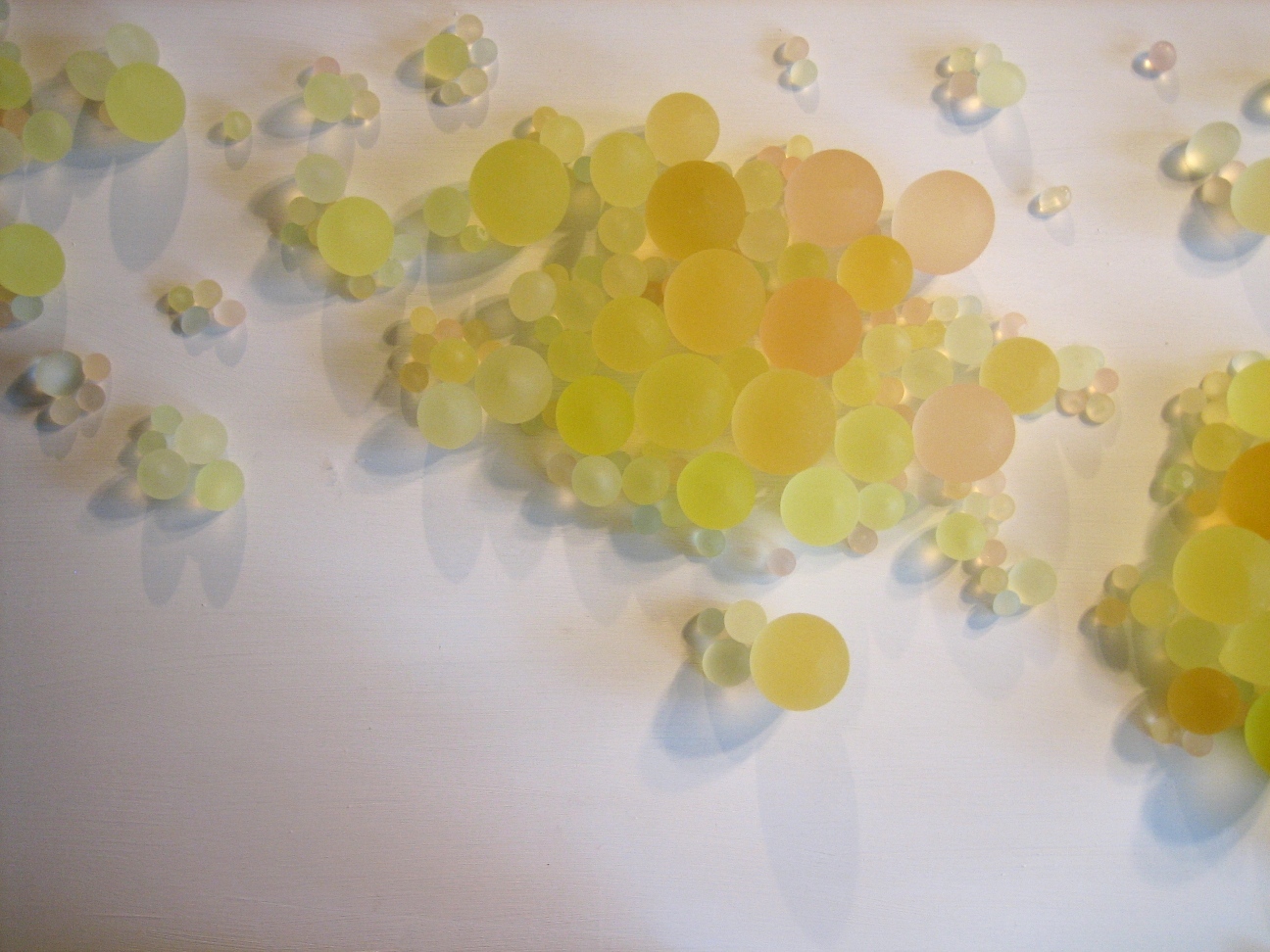
Who do you surround yourself with?
I live with my husband and my twin 2 year old toddlers in Dallas, TX. I continue to stay in contact with my peers’ from graduate school and my co-workers at Brookhaven College. It is necessary for me to surround myself with other artist and creative people to help keep the momentum going. I think a lot of artist surround themselves with creative thinkers, not only for support but to challenge each other and help push the work further.
For whom do you fabricate these pieces? Do you ever imagine the final client?
There are many times I am working on a commission piece and the client is the first thing on my mind. In these situations my thought process changes, there are a few more restrictions and rules that are set in place. When I am in my studio I do not think about the final client. There are so many other decisions that I am making and so in order to keep my head clear I keep the idea of a client or buyer at bay.
Which would be an ideal project?
I don’t really know how to answer this question because I don’t think in those terms. I always have a few projects going at once. When I am stuck on one problem then I begin to work on the other project. Currently working on Mother Load Project, Trestle Designs, a concrete and silver jewelry line, and one-of-a-kind jewelry pieces for an exhibition. So for now, these are my ideal project.
Which ones have been the best and the worst moments of your professional life?
I am hoping my best is yet to come! As an artist I have certain goals I want to obtain, such as galleries I want to exhibit in and magazines I want to be published in, but I try to keep my focus on the work. The hardest part about being an artist for me is the low after the high of having an exhibition. That is why I try to always have something on the horizon to work towards.
What is next for you?
I am currently working on 2 major projects for this spring. One is a group exhibition where I will be displaying 3-5 works from a new series of studio jewelry pieces. The second is an exhibition of “The Mother Load”, a project that engages with mothers who are also professional artists, we are currently working on exhibition venues at the Dallas Museum of Art, at the Center for Creative Connections.
How would you like to see yourself at age of 70’s?
I would like to see myself surrounded by my family and friends while working in my studio preparing for my next exhibition.
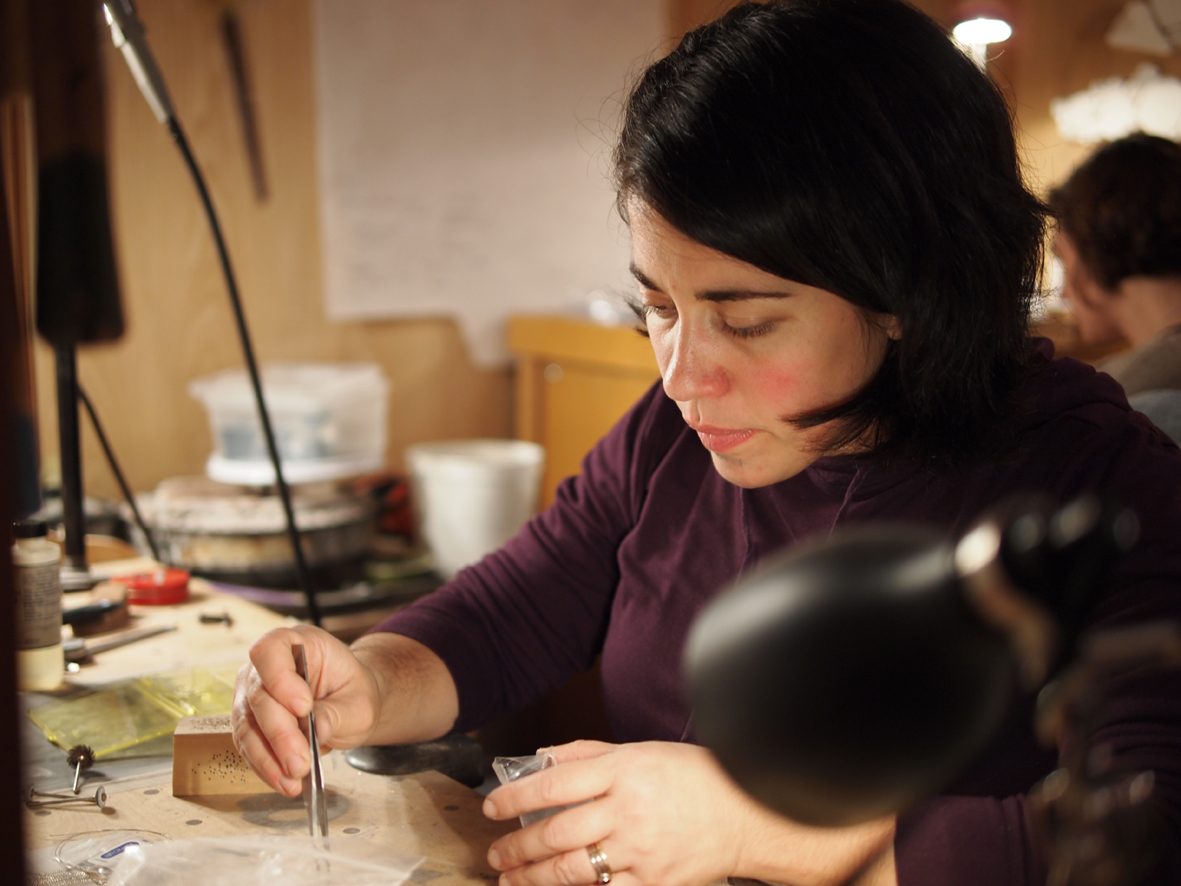
Which is the most difficult from your work, and what you like more?
The most difficult part of my work is finding the time to make my work. Balancing family, teaching and studio time is a challenge. I love working through the problems and finding solutions in a piece. I love when I am in the middle of working on a project. The hardest part for me is the end. It is almost like a relationship that I don’t want to be over. Sometimes I will set a piece aside when I am almost finished with it just so I can have a little more time with it to see if there is anything else it needs.
Which is the best advice that you have received? And the advice that you will give to?
The best advice I got was from a fellow artist friend of mine who told me that I don’t have to reinvent the wheel. This was at a time where I was feeling a little lost with my work and wanted to start over. He told me to look back at what I had done to help me move forward. There are times when being an artist can be intimidating because there are so many choices. For my work, I need limits and rules… and then I can break them.
Y finalmente….. su “mdby paper image”….
